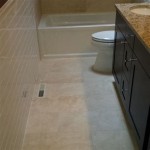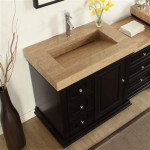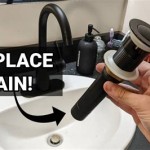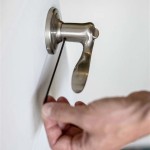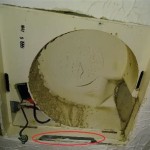How To Replace Individual Bathroom Tiles
Damaged or stained bathroom tiles detract from the overall aesthetic and can sometimes pose safety hazards. Fortunately, replacing individual tiles is a manageable DIY project that can restore the bathroom's appearance without requiring a complete renovation. This guide provides a step-by-step approach to replacing individual bathroom tiles.
Necessary Tools and Materials: Before beginning, gather the necessary tools and materials. These include safety glasses, work gloves, a grout saw, a hammer and chisel, a putty knife, a sponge, a bucket of warm water, thin-set mortar, grout, a notched trowel, tile spacers, and replacement tiles. Matching the existing tile's color, size, and finish is crucial for a seamless repair.
Step 1: Preparing the Work Area: Protecting surrounding surfaces is the first step. Cover adjacent tiles, countertops, and fixtures with masking tape and plastic sheeting. This prevents damage during the removal and installation process.
Step 2: Removing the Grout: Carefully remove the grout surrounding the damaged tile using a grout saw. A steady hand and controlled movements are essential to prevent scratching neighboring tiles. Penetrate the grout lines deeply enough to loosen the tile's grip but avoid excessive force that could damage adjacent tiles.
Step 3: Removing the Damaged Tile: Once the grout is removed, place a chisel at the center of the damaged tile. Gently tap the chisel with a hammer to break the tile. Work from the center outwards, removing smaller pieces until the entire tile is removed. If the tile proves difficult to remove, a hammer drill fitted with a small masonry bit can be used to create additional breaking points. Exercise caution when using power tools to prevent unintentional damage.
Step 4: Cleaning the Area: After removing the broken tile, thoroughly clean the area. Use a putty knife to scrape away any remaining adhesive or grout residue. Vacuuming the area ensures a clean surface for the new tile adhesive.
Step 5: Applying Thin-Set Mortar: Spread a thin layer of thin-set mortar onto the back of the replacement tile using the notched side of a trowel. The notches in the trowel create ridges in the mortar, ensuring proper adhesion and allowing for air circulation. Press the tile firmly into place, ensuring it's level with the surrounding tiles.
Step 6: Using Tile Spacers: Insert tile spacers around the newly installed tile. Spacers maintain consistent spacing between tiles and provide room for grout application. Choose spacers that match the width of the existing grout lines.
Step 7: Applying Grout: After allowing the thin-set mortar to dry according to the manufacturer's instructions, remove the spacers and apply grout. Press the grout into the spaces between the tiles using a grout float, ensuring complete coverage. Remove excess grout with a damp sponge, taking care not to pull grout out of the joints.
Step 8: Cleaning and Finishing: Allow the grout to dry according to the manufacturer's instructions. Once dry, buff the tiles with a clean, dry cloth to remove any grout haze. Finally, seal the grout lines to prevent staining and water damage. This is especially important in shower and tub areas.
Choosing the Right Replacement Tiles: Obtaining the correct replacement tile is essential for a professional-looking repair. If possible, retain a few spare tiles from the original installation. If spares are unavailable, factors such as size, color, finish, and material must be considered. Take a sample of the existing tile to a tile supplier for assistance in finding a close match. Be aware that even slight variations in color or pattern can be noticeable after installation.
Dealing with Difficult Situations: In some cases, the removed tile might break into numerous small pieces, making complete removal challenging. Persistent adhesive residue can also pose problems. For stubborn adhesive, applying heat with a heat gun can soften it for easier removal. If the substrate beneath the tile is damaged, it may require repair before installing the replacement tile. In cases of extensive substrate damage, consulting a professional tiler is recommended.
Maintaining Repaired Tiles: Once the replacement tile is installed, proper maintenance will ensure its longevity. Regularly clean the tiles and grout with a suitable tile cleaner, avoiding abrasive cleaners that can scratch the surface. Immediately address any chips or cracks to prevent further damage and the potential need for additional repairs.
Safety Precautions: Throughout the tile replacement process, prioritize safety. Always wear safety glasses and gloves to protect against dust, debris, and sharp edges. When using power tools, adhere to the manufacturer's instructions and exercise caution. Ensure adequate ventilation when working with adhesives and grouts.

How To Remove Replace One Bathroom Tile Ceramic Repair

Easy Ways To Replace Bathroom Tiles With Pictures Wikihow

Easy Ways To Replace Bathroom Tiles With Pictures Wikihow

How To Replace A Ed Tile

How To Renovate Bathroom Without Removing Tiles Multipanel

Tiling Your Bathroom How Much Types Of Tiles You Will Need

Easy Ways To Replace Bathroom Tiles With Pictures Wikihow

Easy Ways To Replace Bathroom Tiles With Pictures Wikihow

9 Fresh Alternatives To Bathroom Wall Tiles

At Home Repairing Bathroom Tiles Can Be A Challenge
Related Posts

